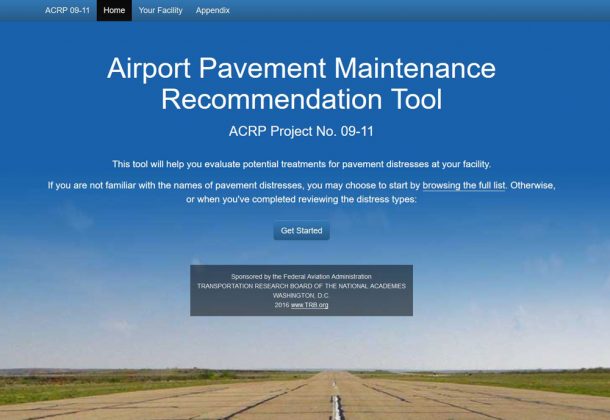 There is one thing all airports have in common—pavement—and a lot of it. In fact, pavements represent perhaps the largest expenditures at any airport. Thus, it is critical that airport management inspect and maintain their pavements for not only safety reasons, but to perform timely maintenance in order to avoid costly full pavement rehabilitation projects.
There is one thing all airports have in common—pavement—and a lot of it. In fact, pavements represent perhaps the largest expenditures at any airport. Thus, it is critical that airport management inspect and maintain their pavements for not only safety reasons, but to perform timely maintenance in order to avoid costly full pavement rehabilitation projects.
The Texas A&M Transportation Institute (TTI) recently completed a project, sponsored by the Airport Cooperative Research Program (ACRP), that provides guidance to general aviation airport managers in determining the most cost-efficient and appropriate preventative maintenance solution to common pavement issues.
“This project provides tools for general aviation airport managers to go out, walk the pavement and identify common pavement distresses,” says TTI Pavement Management Program Manager and Project Leader Tom Freeman. “These are general aviation airports we’re talking about and some of them are very small. The airport managers in most cases do not have experience in identifying when they have a problem with their pavement, what they should do, or they may wait too late to take action.”
The project results yielded four products: a report, guidebook, field guidebook and website. The TTI Communications group assisted the project team in developing the project resources.
“Key to this project was the production of deliverables that could easily be interpreted and used in the field,” notes TTI Research Scientist Jeff Borowiec. “The website and field guide allow a user to quickly determine what type of cracking or surface distress they may be looking at, and then the best course of maintenance action.”
One of the features of the website is a cost estimator tool that it is equally easy to use on a phone or tablet as on a desktop computer. For example, if a user sees a pavement distress, they identify it using pictures provided on the website. Then the user goes through a series of steps to determine the severity of the distress and best repair option. The user is then provided with a cost estimate that can be taken to local officials.
“I like to equate pavement maintenance with maintaining your vehicle,” says Freeman. “If you invest resources into keeping it in good shape, then it will save you costly repairs in the future. We hope the tools we’ve developed in this project assist airport managers in making key decisions.”
Project Resources
Field Guide for the Airport Pavement Maintenance Recommendation Tool for ACRP Report 159 (PDF)


